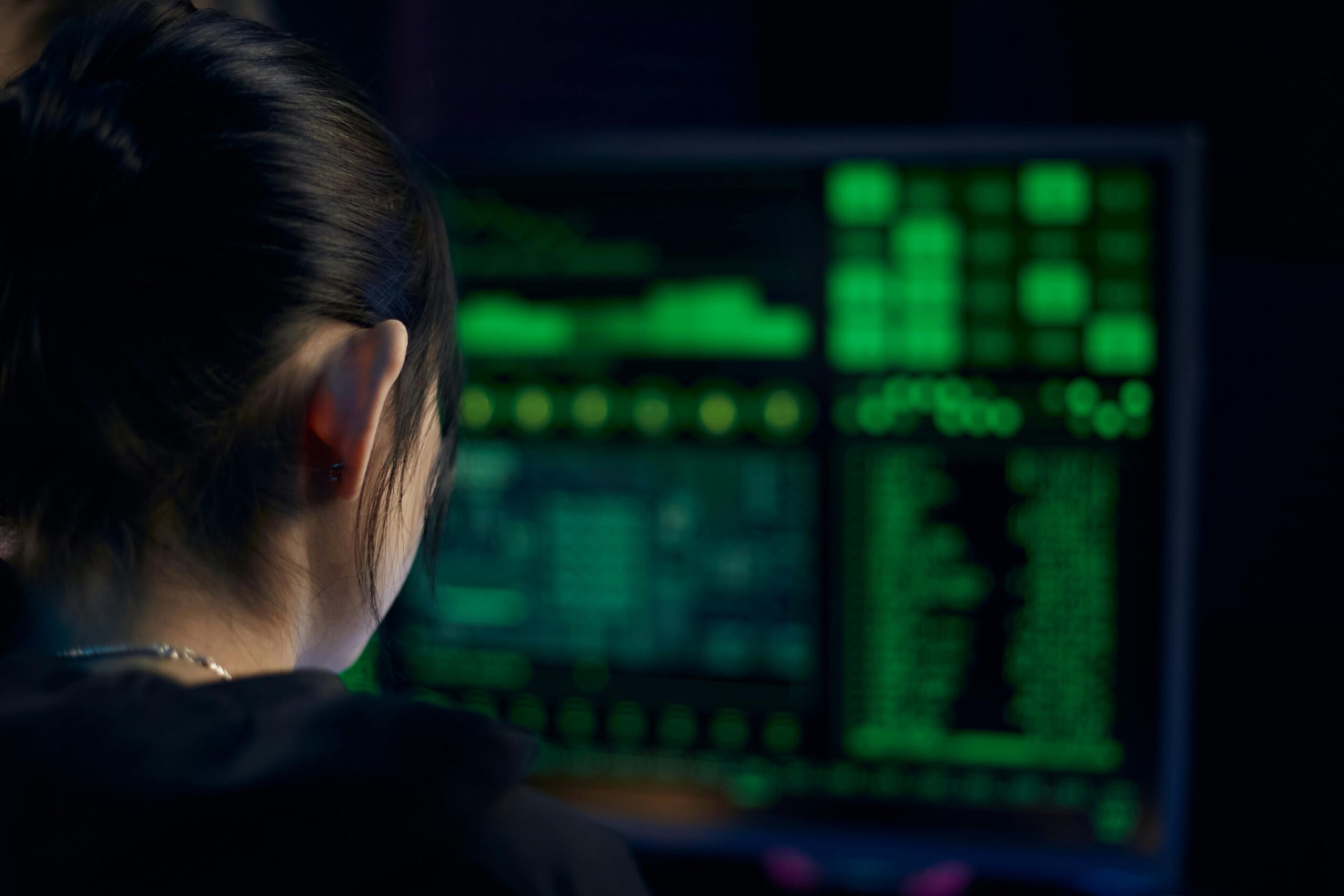Tech
Gartner Symposium 2025: The AI opportunity for CIOs | Computer Weekly

Gaining value from artificial intelligence (AI) was the key topic in the opening keynote of the Gartner symposium, with Gabriela Vogel, vice-president analyst at Gartner, telling 6,000 delegates at the Barcelona conference: “We are at a crossroads, CIOs have either made a mistake or they are on a path to greatness.”
Vogel stated that value in the private sector means growth, adding: “Chief financial officers [CFOs] say 74% of you are achieving productivity gains, but only 11% see real return on investment [ROI]. AI readiness is the key that unlocks the next level.”
Along with a focus on delivering business growth, Gartner sees an opportunity for CIOs to get out of back office IT. Almost two-thirds of CIOs (65%) are not happy with being constrained to the four walls of the IT department. According to analyst firm Gartner, CIOs want to be customer-facing, where they are involved in the same conversations that people in the business have with their customers and customer prospects.
“In particular, they need to be much more involved in client-facing solutions, in client-facing conversations and in client-facing strategies, rather than the back office or core IT operations, which are internally facing,” said Daniel Sanchez-Reina, vice-president analyst at Gartner, adding that business chiefs want to hear about the financial impact and scaling of AI to materialise the financial impact. “CEOs and CFO are tired of listening to CIOs say they are piloting AI projects and say they will be able to improve productivity.”
Beyond prioritising the financial return on AI-powered initiatives, Gartner is urging IT leaders to prioritise and reprioritise their IT spending “in flight”. Sanchez Reina said this means they should no longer plan spending-based quarterly budget reviews, strategy reviews or annual spend. Instead, he recommended they adapt a more flexible approach to IT budget planning, which means CIOs will have to think ahead to consider how the IT planning decisions they make could impact the business in the future. For insurance, he said CIOs will need to consider how their decisions could affect the profit, loss and operating costs of the business.
Among the difficult conversations CIOs are likely to have with senior management is when being sold product bundles where there is no immediate value. For instance, an IT leader may decide to purchase reserved instances of graphics processors (GPUs) for 12 months to support AI projects, but business priorities then change.
Reina Sanchez said: “If you have acquired GPUs, it’s just a matter of saying, okay, let’s terminate these AI projects because they don’t make sense in the new context. CIOs need to have to open a conversation with the C-suite and discuss which AI projects will not give the ROI or the objectives that were planned.”
He also urged CIOs to get assurances from business chiefs that the decision to terminate these projects has their full backing.
While the conversation should move beyond efficiency, such gains in efficiency can be directly correlated financial costs. For instance, Sanchez Reina said AI could be used to “supercharge the internal IT team”, adding: “Maybe AI can enable them to reduce their outsource bill.” Beyond IT, where business processes are outsourced, this supercharged AI could reduce that bill too.
As Sanchez Reina noted, if a CIO can say AI is able to reduce the outsourcing bill by 5% to 30%, there is a direct business impact.
Tech
What does OpenAI’s restructuring mean for the future of the AI industry?

OpenAI’s recent restructuring of its for-profit arm to a public benefit corporation is a smart move that will allow the organization to increase its investment opportunities and maintain its nonprofit roots, according to a Northeastern University nonprofit management expert.
“They are still keeping their nonprofit legacy intact in many ways,” says Cortney Nicolato, a Northeastern lecturer and president and chief executive of the United Way of Rhode Island, a branch of a global nonprofit that provides and funds social service programs to people in need.
OpenAI recently announced after months of negotiations between attorneys general in Delaware, where it was incorporated, and California, where it is currently based, that it had changed the organization’s structure.
As part of the reorganization, OpenAI, the well-known AI technology company, changed its for-profit business into a public benefit corporation. A public benefit corporation is a type of for-profit business that, in addition to having shareholders, has committed to pursuing societal causes.
OpenAI’s recently renamed nonprofit arm, the OpenAI Foundation, has a 26% equity stake in the company. Microsoft, which has long been one of the company’s biggest supporters, has a 27% equity stake in the company. The other 47% equity stake is owned by employees, previous employees, and current and new investors, according to an OpenAI blog post.
Nicolato says OpenAI’s pivot to a public benefit corporation makes sense as it is increasingly becoming one of the more popular business models for companies looking to make societal changes.
Similarly, Anthropic, another AI company, is a public benefit corporation.
Other companies that follow a similar structure are Bombas, which in addition to selling socks, also gives them away; Toms Shoes, which gives away a free pair of shoes for every pair sold. They are what are known as B Corporations, which, similar to public benefit corporations, have a social component to their for-profit businesses.
“There are a lot more B Corps now than there were before,” says Nicolato. “So I’m not surprised that they went this route because it offers more opportunity to license out products.”
At the same time, however, given that the nonprofit’s arm retains a large stake in the private arm, it means it is still acting as a check on the organization as a whole, she says.
In addition to the restructuring, OpenAI announced that it is investing $25 billion for the nonprofit arm to focus on two specific areas—health care and AI resilience.
“I think what they’ve done with their nonprofit arm is really hone exactly what that nonprofit will be focused on,” she says.
But why did OpenAI do this restructuring in the first place? What are the economic benefits?
Gastón de los Reyes, an international business and strategy professor at Northeastern University, says this new restructuring significantly increases OpenAI’s capital investment opportunities as it continues to spend billions on the development of its AI technologies.
“What this change allows is for a lot more investors to be able to make huge amounts of money by owning a share of OpenAI,” he says.
Specifically, this new structure positions OpenAI for a potential initial public offering and removes a previous profit cap for investors, he explains.
“The floodgates of the capital have been opened to keep this arms race going between OpenAI, Google and Anthropic,” he says, highlighting the companies’ pursuit of artificial general intelligence, a form of AI that is cognitively as capable or more capable than humans.
Notably, OpenAI was incentivized to create the new corporate structure to take full advantage of an investment from the Japanese conglomerate Softbank, de los Reyes says.
Speaking to the nonprofit’s now massive $130 billion stake in the for-profit arm, Craig Welton, also a Northeastern lecturer and the chief development officer of the Boys and Girls Clubs of Dorchester, a local branch of the national after-school organization, says the potential societal benefits are massive.
“It will probably be the most well-funded foundation in the country when it’s all said and done,” he says.
Whether the organization actually lives up to its goals will certainly depend on its nonprofit and for-profit boards in maintaining OpenAI’s stated missions and goals, he says.
This story is republished courtesy of Northeastern Global News news.northeastern.edu.
Citation:
What does OpenAI’s restructuring mean for the future of the AI industry? (2025, November 10)
retrieved 10 November 2025
from https://techxplore.com/news/2025-11-openai-future-ai-industry.html
This document is subject to copyright. Apart from any fair dealing for the purpose of private study or research, no
part may be reproduced without the written permission. The content is provided for information purposes only.
Tech
The Mysterious Math Behind the Brazilian Butt Lift

In the history of gluteal enhancement, Mexico City stands out. It protrudes. It was here, in 1979, that a plastic surgeon, Mario González-Ulloa, first installed a pair of silicone implants designed specifically for the buttocks. The textbook Body Sculpting with Silicone Implants calls González-Ulloa the “grandfather of buttock augmentation.” The early 2000s saw a new generation of Mexico City buttock transformation luminaries, notably Ramón Cuenca-Guerra. In his 2004 paper “What Makes Buttocks Beautiful?” Cuenca-Guerra laid out four characteristics that “determine attractive buttocks” as well as the five types of “defects,” with strategies for correcting each one. I, for instance, have defect type 5, the “senile buttock.” (González-Ulloa’s depiction of this took the form of charcoal nudes contrasting “the typical ‘happy buttock’”—high, rounded, dimpled—with its counterpart, the low-slung, drooping “sad buttock.”)
While I understand the value of standardizing procedures and setting guidelines for surgical practice, I tripped over Cuenca-Guerra’s methodology. How and by whom had the determinants been determined? Like this: 1,320 photographs of “nude women ages 20 to 35 years, as seen from behind” were presented to a panel of six plastic surgeons, who “pointed out which buttocks they considered attractive and harmonious, and features on which this attractiveness depended.” Oho!
I thought it would be interesting to talk to Cuenca-Guerra about the notion of a visually ideal female figure. As something that could or should be surgically created (or, in the case of the senile buttock, re-created). As something that even exists. I sent an email using the address on a more recent journal paper. There was no reply. Ramón Cuenca-Guerra’s buttocks are in worse shape than mine. He has been dead for some time. I was able to reach a colleague of his, José Luis Daza-Flores. Here was the third generation; just as Cuenca-Guerra had studied under González-Ulloa, Daza-Flores had studied under Cuenca-Guerra, extending the lineage and making Daza-Flores, I guess, “the son of buttock augmentation.”
Daza-Flores collaborated with Cuenca-Guerra on a paper called “Calf Implants,” in which the team did for the lower leg what Cuenca-Guerra had done for the butt: laid out “the anatomical characteristics that make calves look attractive” and the “defects” to be addressed. Here again, plastic surgeons were recruited to judge images—2,600 of them, a vast photographic millipede of female legs.
The paper took an unexpected turn. Referring to a marked-up photograph of a lower leg deemed attractive, the authors tried to show that its measurements conformed to what is known in mathematics as the divine proportion (or golden ratio)—1.6 (I’m rounding it off) to 1. When you divide a line into two parts such that the whole length divided by the long part is equal to the long part divided by the short part, both those ratios will be 1.6 to 1. I found an illustration of the divine proportion on a website called Math Is Fun (and convincing no one). The golden dividing line splits the length such that one chunk is roughly two-thirds and the other is around one-third. The ancient Greeks divided the “ideal” face into similarly proportioned thirds. This was the first time I’d seen the divine proportion applied to a leg.
The paper contained sentences like this: “Seventeen women had thin legs, in the shape of a tube, and a mere 1:1.618 ratio in the A-P and L-L projections.” Though I confess to not grasping the particulars of the discussion, I believe that to be a mathematically precise description of cankles.
Tech
Security flaws in portable genetic sequencers risk leaking private DNA data

Portable genetic sequencers used around the world to sequence DNA have critical, previously unreported security vulnerabilities that could reveal or alter genetic information without detection, according to a new study.
Researchers from the University of Florida have, for the first time, exposed these security risks in devices from Oxford Nanopore Technologies, which produces nearly all the portable genetic sequencers in the world.
Alerted by the security researchers, Oxford Nanopore Technologies has rolled out updated software to patch the vulnerabilities. But out-of-date software, or unsecured internet systems, could still leave some DNA sequencers vulnerable to attack.
“No one in the world had looked at the security of these devices, which shocked me,” said Christina Boucher, Ph.D., a professor of computer and information science and engineering at UF, expert in bioinformatics, and co-author of the new report.
Boucher collaborated with Sara Rampazzi, Ph.D., also a professor of computer and information science and engineering, cybersecurity expert and project lead at UF, and students in the department to test Nanopore sequencers for security flaws. The study serves as a warning to the scientific community that new threats to genomic data urge a shift toward “secure-by-design” systems as portable DNA sequencers become increasingly common. The team published their findings in Nature Communications.
The researchers uncovered three vulnerabilities in the Oxford Nanopore MinION portable sequencer and its associated software. Two of these flaws allow an unauthorized user to improperly access the device and potentially copy or alter the DNA data without the authorized user’s knowledge. A third flaw opens the sequencer to a denial-of-service attack, which would halt the sequencing operation and make the device appear broken.
The Cybersecurity and Infrastructure Security Agency, the federal government’s cyber defense coordinator, verified these vulnerabilities in a report released Oct. 21. The report also provides instructions from Oxford Nanopore Technologies on how users can update their sequencers to address the security flaws.
Versions with older software would remain open to attack. This is especially possible when the portable sequencers are connected to insecure Wi-Fi networks or remote control is activated.
Costing just a few thousand dollars and able to operate anywhere in the world, these palm-sized sequencers have transformed the previously cumbersome and expensive work of sequencing DNA. But that portability contributes to the security risks of these devices because the sequencers must be connected to a computer to work.
“You are connecting a very specialized device to a general-purpose device like a laptop, which is intrinsically assumed to be secure,” said Rampazzi. “Instead, that laptop could be connected to an unsecured network, or it could be infected with malware or ransomware, especially if used in the field outside controlled environments.”
These nanopore sequencers are marketed only for research use and not to be used for clinical diagnosis. Yet even when restricted to research, these devices can be used to sequence the DNA of people.
The U.S. National Institute of Standards and Technology, which focuses on defining genomic cybersecurity and privacy guidelines, has only started to consider research use cases in distinction to clinical use in their latest draft guidelines, highlighting the increased attention on the topic and the lack of a clear standard.
Revealing these previously undiscovered vulnerabilities was only possible due to the interdisciplinary collaboration between the Rampazzi and Boucher labs. Boucher develops algorithms to better analyze DNA, while Rampazzi researches security flaws in critical systems ranging from medical devices, and self-driving cars to underwater data centers. Combining their expertise helped alert the community to a significant privacy threat.
“In bioinformatics, we haven’t been working as closely with the security community as I think we should be,” Boucher said.
More information:
Toward security-aware portable sequencing, Nature Communications (2025). DOI: 10.1038/s41467-025-66024-z
Citation:
Security flaws in portable genetic sequencers risk leaking private DNA data (2025, November 10)
retrieved 10 November 2025
from https://techxplore.com/news/2025-11-flaws-portable-genetic-sequencers-leaking.html
This document is subject to copyright. Apart from any fair dealing for the purpose of private study or research, no
part may be reproduced without the written permission. The content is provided for information purposes only.
-

 Sports1 week ago
Sports1 week agoTudor’s Juve exit means McKennie must prove himself all over again
-

 Politics1 week ago
Politics1 week agoPolitical violence kills almost 300 since Hasina’s fall: rights group
-

 Sports1 week ago
Sports1 week agoPakistani runners make their mark at Istanbul Marathon
-

 Entertainment1 week ago
Entertainment1 week agoPresident Zardari to attend Second World Summit for Social Development in Doha
-

 Politics1 week ago
Politics1 week agoIran vows to rebuild nuclear sites ‘stronger than before’
-

 Politics1 week ago
Politics1 week agoTwo arrested after multiple people stabbed on UK train, police say
-

 Entertainment1 week ago
Entertainment1 week agoGeorge Clooney on “Jay Kelly,” fame and family
-

 Tech1 week ago
Tech1 week agoLive TV Isn’t Dead. These Are the Best Live TV Streaming Services






